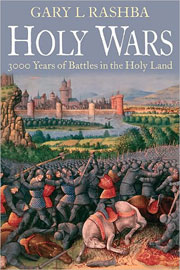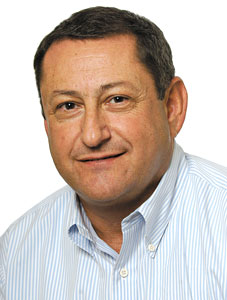Letters to the Editor
AJSS returns to Kansas City, Ohev Sholom
In the last four years, American Jewish Society for Service has learned one inescapable fact: There is no place like home. It is for this reason that AJSS keeps returning to Kansas City to provide help when and where help is needed. Each summer AJSS gives Jewish teens from across the United States and Canada the chance to help communities and put their Jewish values into action. We can’t do this without the help and generosity of community leaders in this case, the members and staff of Congregation Ohev Sholom. They have opened their home, their shul and their community to us. And we are grateful for their continued support.
On June 27, 12 young people and four leaders moved into Ohev and got to work. The participants come from New York, New Jersey, California, Pennsylvania, Massachusetts, Maryland, Michigan and Ontario, Canada. We will be working closely with Mark Naster, resource development coordinator of Heartland Habitat for Humanity. Mark has been a great friend and ally of AJSS and even came to New York to help us celebrate our 60th anniversary. We are in the process of setting up work with other agencies so that along with working on housing, our teens can help on issues related to food, health, the environment and education.
In addition, we look forward to our interactions with the larger Jewish community of Kansas City, especially the Jewish Community Center, which has generously offered us showers and access to their services and doing our part to help the faith-based communities of Kansas City work and learn together. We look forward to spending our summer at Ohev Sholom and know that this community will make a lasting and meaningful impression on us. When we say good-bye on Aug. 6, we will again be reminded that there was no place like home.
See y’all soon!
Rafi Glazer
Program Associate
AJSS
Bethesda, Md.
Thanks Flo Harris
SAFEHOME would like to publicly thank the Flo Harris Foundation for renewing SAFHEOME’s Jewish Outreach Program Grant for this grant cycle. By now you received your copy of The Guide to Jewish Life (published June 14). At the time of the editor’s deadline, SAFEHOME did not know who the funder of the program would be. Under the explanation of SAFEHOME’s Jewish Outreach Program, it gives credit to another grantor for funding. Please know that the Flo Harris Foundation deserves all the k’vod (honor) for enabling SAFEHOME to continue its outreach in the Jewish Community.
If you have a question about SAFEHOME’s Jewish Outreach Program, or materials and services that SAFEHOME provides, please call me.
Susan Lebovitz
SAFEHOME Jewish Outreach Program coordinator
913-378-1518



 “Tangles: A Story about Alzheimer’s, My Mother and Me,” by Sarah Leavitt. (Skyhorse Publishing 2012)
“Tangles: A Story about Alzheimer’s, My Mother and Me,” by Sarah Leavitt. (Skyhorse Publishing 2012) I recently heard a speech given by author Gary Rashba about the book he wrote about 3,000 years of Israel’s wars, “Holy Wars.” It was sponsored by Media Central, an independent media-liaison organization and support service for foreign journalists.
I recently heard a speech given by author Gary Rashba about the book he wrote about 3,000 years of Israel’s wars, “Holy Wars.” It was sponsored by Media Central, an independent media-liaison organization and support service for foreign journalists. My uncle, Rabbi Stanley Rabinowitz, who for 26 years guided Washington, D.C.’s largest and oldest conservative synagogue, passed away on Friday, June 8. It was his 95th birthday.
My uncle, Rabbi Stanley Rabinowitz, who for 26 years guided Washington, D.C.’s largest and oldest conservative synagogue, passed away on Friday, June 8. It was his 95th birthday. She seems like a most unlikely hero. She smiles at the world, with quiet dignity. She is filled with compassion, patience and wisdom. She tries to always find the compromise position. And seems to be the one to go the extra distance to get there. Nonetheless, Rabbi Miri Gold has become the “poster-rabbi” in the fight for equal rights by the Reform and Conservative movements in Israel. And now, she is their hero.
She seems like a most unlikely hero. She smiles at the world, with quiet dignity. She is filled with compassion, patience and wisdom. She tries to always find the compromise position. And seems to be the one to go the extra distance to get there. Nonetheless, Rabbi Miri Gold has become the “poster-rabbi” in the fight for equal rights by the Reform and Conservative movements in Israel. And now, she is their hero. This week marks the 45th anniversary of the Six-Day War, the seismic event that has shaped the subsequent history of the Arab-Israeli conflict. (The first day of fighting was June 5, 1967) The war’s immediate results, Israel’s quick defeat of three Arab armies and its U.N.planned takeover of territories with large concentrations of Palestinian Arabs, raised issues that are still unresolved today.
This week marks the 45th anniversary of the Six-Day War, the seismic event that has shaped the subsequent history of the Arab-Israeli conflict. (The first day of fighting was June 5, 1967) The war’s immediate results, Israel’s quick defeat of three Arab armies and its U.N.planned takeover of territories with large concentrations of Palestinian Arabs, raised issues that are still unresolved today.